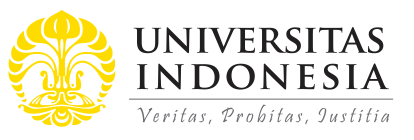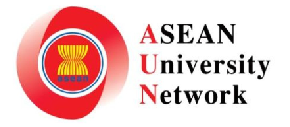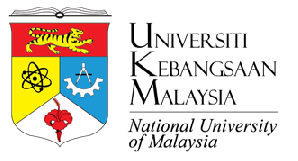
Abstract
The ongoing community service program has not provided optimal and sustainable outcomes that can improve the creative economy sector as a partner, especially in the era of technological disruption. This study describes the importance of setting up a creative economy clinic at the university, which is based on the needs of upscaling local micro, small, and medium enterprises (MSMEs’) performance. The discussions presented in the paper arise from a qualitative conceptual study using an instrumental case study approach, linking insights from theoretical perspectives and works across disciplines that concern the development of a creative economy clinic. The results of the discussion highlight the potential outcomes of establishing an on-campus creative economy clinic, ensuring the business sustainability of MSMEs in the era of disruptive technology. An initial assessment related to the needs of MSMEs is required as a strategic step in the development of the ecosystem of related creative economy clinics using each university’s competitive advantage.
References
Afonso, O., Monteiro, S., & Thompson, M. (2012). A Growth Model For The Quadruple Helix. Journal of Business Economics and Management, 13(5), 849–865.
https://doi.org/10.3846/16111699.2011.626438
Agustina, T. S. (2011). Peran Inkubator Bisnis Perguruan Tinggi Dalam Meminimalkan Resiko Kegagalan Bagi Wirausha Baru Pada Tahap Awal (Start-Up). Majalah Ekonomi, XXI(1), 64–74.
http://journal.lib.unair.ac.id/index.php/ME/article/view/834/829
Alexander, U., & Evgeniy, P. (2012). The Entrepreneurial University in Russia: from Idea to Reality. Procedia-Social and Behavioral Sciences, 52, 45–51.
https://doi.org/10.1016/j.sbspro.2012.09.440
Bacigalupo, M., Kampylis, P., Punie, Y., & Van den Brande, G. (2016). EntreComp: The Entrepreneurship Competence Framework. Luxembourg: Publication Office of the European Union; EUR 27939 EN.
https://doi.org/10.2791/593884
Badan Ekonomi Kreatif. (2017). Laporan PDB Ekonomi Kreatif Tahun 2014-2016. Badan Ekonomi Kreatif Kerjasama Badan Pusat Statistik.
Badan Ekonomi Kreatif. (2018, November 19). Laporan Opus 2019. Badan Ekonomi Kreatif Kerjasama Badan Pusat Statistik. Retrieved from:
https://bekraf.go.id/pustaka/page/89-opus-creative-economy-outlook-2019-indonesia-version
Bergmann, H., Geissler, M., Hundt, C., & Grave, B. (2018). The climate for entrepreneurship at higher education institutions. Research Policy, 47(4), 700–716.
https://doi.org/10.1016/j.respol.2018.01.018
Boldureanu, G., Ionescu, A. M., Bercu, A. M., Bedrule-Grigoruţă, M. V., & Boldureanu, D. (2020). Entrepreneurship education through successful entrepreneurial models in higher education institutions. Sustainability (Switzerland), 12(3), 1–33.
https://doi.org/10.3390/su12031267
Bomani, M., Fields, Z., & Derera, E. (2019). The Role of Higher Education Institutions In The Development of SMES in Zimbabwe. International Journal of Business and Management Studies, 11(2), 1–15.
https://doi.org/10.1007/BF00162541
Campbell, C. (1989). Change Agents in the New Economy: Business Incubators and Economic Development. Economic Development Review, 7(2), 56–59.
Chipangura, A., & Kaseke, N. (2012). Growth Constraints of Small and Medium Enterprises (SMEs) at Glenview Furniture Complex (GFC) in Harare (Zimbabwe). International Journal of Marketing and Technology, 2(6), 40–83.
D’Imperio, R. (2013). Growing the global economy through SMEs Contents. In Edinburgh Group, 1(1).
Darwish, S. Z. (2014). The Role of Universities in Developing Small and Medium Enterprises (SMEs): Future Challenges for Bahrain. International Business and Management, 8(2), 70–77.
Delfmann, H., & Koster, S. (2012). Knowledge Transfer between SMEs and Higher Education Institutions: Differences between Universities and Colleges of Higher Education in the Netherlands. Industry and Higher Education, 26(1), 31–42.
https://doi.org/10.5367/ihe.2012.0079
Dessy, I. (2007). Strengthening Cluster Building in Developing Country alongside the Triple Helix: Challenge for Indonesian Clusters - A Case Study of the Java Region. In MPRA Paper (Issue 5831).
http://mpra.ub.uni-muenchen.de/5831/
Doyle, G. (2016). Creative Economy and Policy. European Journal of Communication, 31(1), 33–45.
https://doi.org/10.1177/0267323115614469
Efi, A. E. (2014). “The Role of Higher Institutions in Promoting Entrepreneurship and Small Business in Developing Nations: The Nigerian Experience”, International Journal for Innovation Education and Research, 2(9), 15-22.
https://doi.org/10.31686/ijier.vol2.iss9.233
Eisler, R., & Montuori, A. (2001). The Partnership Organization. OD Practitioner, 33, 11-17. https://www.researchgate.net/publication/259189006_The_Partnership_Organization
Eniola, A. A., & Ektebang, H. (2014). SME Firms Performance In Nigeria: Competitive advantage and its impact. International Journal of Research Studies in Management, 3(2), 75–86.
https://doi.org/10.5861/ijrsm.2014.854
Etzkowitz, H. (2008). The Triple Helix: University–industry–government innovation in action. London: Routledge.
https://doi.org/10.1111/j.1435-5957.2011.00357
Fahmi, F. Z., McCann, P., & Koster, S. (2015). Creative economy policy in developing countries: The case of Indonesia. Urban Studies, 54(6), 1–18.
https://doi.org/10.1177/0042098015620529
Famiola, M., & Hartati, S. (2018). Entrepreneurship learning system in business incubators: An case study in Indonesia. International Journal of Engineering and Technology (UAE), 7(4), 57–62.
https://doi.org/10.14419/ijet.v7i4.28.22390
Fukuyama, M. (2018). Society 5.0: Aiming for a New Human-centered Society. Japan Spotlight, 1, 47–50.
Gasparin, M., & Quinn, M. (2020). The INCITE model of policy development for the creative industries: the case of Vietnam. Journal of Asian Business and Economic Studies, 27(1).
https://doi.org/10.1108/jabes-12-2019-0125
Gilson, L. L., & Goldberg, C. B. (2015). Editors’ Comment: So, What Is a Conceptual Paper? Group and Organization Management, 40(2), 127–130.
https://doi.org/10.1177/1059601115576425
Gronroos, C. (1990). Service Management: A Management Focus for Service Competition. International Journal of Service Industry Management, 1(1), 6–14.
https://doi.org/10.1108/09564239010139125
Hasbullah, R., Surahman, M., Yani, A., Almada, D. P., & Faizaty, E. N. (2015). Peran Inkubator Bisnis Perguruan Tinggi dalam Peningkatan Kinerja Usaha UKM Pangan (Role of Universty Bussiness Incubators on the Improvement of Food SMEs Bussiness Performances). Jurnal Ilmu Pertanian Indonesia (JIPI), 20(1), 59–65.
https://journal.ipb.ac.id/index.php/JIPI
Herawati, A. R. (2011). Sistem Kemitraan Usaha Mikro Kecil Menengah (UMKM) - Usaha Besar Dengan Pemodelan System Archetype. Universitas Indonesia. Retrieved from:
http://lib.ui.ac.id/detail.jsp?id=20306720#parentHorizontalTab2
Hunjet, A., Kozina, G., & Kurečić, P. (2015). The Role of Higher Education Institutions in the Development of Entrepreneurship Competences on the Study Programs other than Economics. Proceedings of the 9th Economic and Social Development Conference, 620–629.
Ismulyati, S., & Ginting, G. (2018). Entrepreneurship modeling in higher education institutions: An explanatory study. Review of Integrative Business and Economics Research, 7(3), 181–189.
Jaakkola, E. (2020). Designing conceptual articles: four approaches. AMS Review, 1–9.
https://doi.org/10.1007/s13162-020-00161-0
Jaelani, A. (2019). Triple Helix Sebagai Model Bagi Inovasi Pendidikan Tinggi: Analisis Logika Kelembagaan Dalam Pengembangan Kewirausahaan Dan Ekonomi. Al-Amwal: Jurnal Ekonomi dan Perbankan Syari'ah, 11(1), 121-138.
https://doi.org/10.24235/amwal.v11i1.4980
Jung, H., & Mah, J. S. (2014). The Role of the Government in Science and Technology Education of Korea. Science, Technology and Society, 19(2), 199–227.
https://doi.org/10.1177/0971721814529877
Kasim, R. S. R. (2011). Malaysian Higher Education Institutions: Shaping an Entrepreneurial Agenda. International Journal of Information and Education Technology, 1(2), 163–170.
https://doi.org/10.7763/ijiet.2011.v1.27
Kaymas, S. (2020). Is development possible without cultural policies? Rethinking creative industries and sustainable development in the case of Turkey. Creative Industries Journal, 13(1), 72–92.
https://doi.org/10.1080/17510694.2019.1652026
Khurana, A. (2017, August). How startup accelerators, incubators, and mentors are failing our entrepreneurs.
https://yourstory.com/2017/08/startup-accelerators-incubators-mentors-failing-entrepreneurs
Kim, S. M., & Sherraden, M. (2014). The impact of gender and social networks on microenterprise business performance. Journal of Sociology and Social Welfare, 41(3), 48–70.
https://scholarworks.wmich.edu/jssw/vol41/iss3/4
Kontrimienė, V., & Melnikas, B. (2017). Creative Industries: Development Processes Under Contemporary Conditions of Globalization. Business, Management and Education, 15(1), 109–126.
https://doi.org/10.3846/bme.2017.340
Krauss, S. E. (2005). Research Paradigms and Meaning Making : A Primer. The Qualitative Report, 10(4), 758–770.
https://doi.org/10.1176/appi.ajp.162.10.1985
Li, C., Ahmed, N., Qalati, S. A., Khan, A., & Naz, S. (2020). Role of Business Incubators as a Tool for Entrepreneurship Development: The Mediating and Moderating Role of Business Start-Up and Government Regulations. Sustainability, 12(5), 1822.
https://doi.org/10.3390/su12051822
McAdam, M., Miller, K., & McAdam, R. (2018). Understanding Quadruple Helix relationships of university technology commercialisation: a micro-level approach. Studies in Higher Education, 43(6), 1058–1073.
https://doi.org/10.1080/03075079.2016.1212328
McGregor, S. (2018). Argumentative essays: position, discussion, and think-piece papers. In McGregor, S. Understanding and evaluating research (pp. 469–495). Thousand Oaks, CA: SAGE Publications, Inc.
https://doi.org/10.4135/9781071802656
Mei, W., & Symaco, L. (2020). University-wide entrepreneurship education in China’s higher education institutions: issues and challenges. Studies in Higher Education, 1-17.
https://doi.org/10.1080/03075079.2020.1735330
Moore, I. (2014). Cultural and Creative Industries Concept – A Historical Perspective. Procedia - Social and Behavioral Sciences, 110, 738–746.
https://doi.org/10.1016/j.sbspro.2013.12.918
Munandar, A. (2016). the Strategy Development and Competitive Advantages of Micro Small Medium Entreprise Business Institution Toward Regional Development. Jurnal AdBispreneur, 1(2), 103–112.
https://doi.org/10.24198/adbispreneur.v1i2.10233
Nainggolan, R. (2016). Gender, Tingkat Pendidikan Dan Lama Usaha Sebagai Determinan Penghasilan UMKM Kota Surabaya. Kinerja, 20(1), 1–12.
https://doi.org/10.24002/kinerja.v20i1.693
Ndabeni, L. L. (2008). The contribution of business incubators and technology stations to small enterprise development in South Africa. Development Southern Africa, 25(3), 259–268.
https://doi.org/10.1080/03768350802212022
Nicolaides, A. (2011). Entrepreneurship- the role of Higher Education in South Africa. Educational Research, 2(4), 1043–1050.
Nugraha, A. E. P. (2018). Pengelolaan dan Strategi UMKM di Era Disrupsi Digital. Proceeding Seminar Nasional, 887–890.
http://prosiding.upgris.ac.id/index.php/SNKIII/SNK2018/paper/view/3097/3044
O’Malley, B. (2016). Universities Playing ‘Key Role’ in Growth of Start-Ups. https://www.universityworldnews.com/post.php?story=20160127162334861
Obaji, N. O., Onyemerela, C., & Olugu, M. U. (2015). Entrepreneurship and Business Incubation Programme : the Sure Couple. International Journal of Science, Technology and Management, 4(1), 1627–1633.
https://pdfs.semanticscholar.org/7ad7/0298d590d16371ff58a9caa5fa5bc03b617b.pdf
Ogutu, V. O., & Kihonge, E. (2016). Impact of Business Incubators on Economic Growth and Entrepreneurship Development. International Journal of Science and Research (IJSR), 5(5), 231–241.
https://doi.org/10.21275/v5i5.nov163196
Pettersen, I. B., Aarstad, J., Høvig, Ø. S., & Tobiassen, A. E. (2015). Business incubation and the network resources of start-ups. Journal of Innovation and Entrepreneurship, 5(7). https://doi.org/10.1186/s13731-016-0038-8
Piterou, A., & Birch, C. (2014). The role of Higher Education Institutions in supporting innovation in SMEs: university-based incubators and student internships as knowledge transfer tools. InImpact: The Journal of Innovation Impact, 7(1), 72–79. http://nimbusvault.net/publications/koala/inimpact/papers/inkt14-010.pdf
Plechero, M. (2009). The Role of Local Universities in Improving Traditional SMEs Innovative Performances : The Veneto Region Case.
Pramudita, B. A. (2019, October 3). Pertumbuhan Startup di Indonesia melonjak 5 tahun terakhir.
https://www.wartaekonomi.co.id/read249740/pertumbuh-startup-in-Indonesia-soaring-5years-last
Praswati, A. N. (2017). Perkembangan Model Helix Dalam Peningkatan Inovasi. Seminar Nasional Riset Manajemen & Bisinis : Perkembangan Konsep Dan Riset E-Business Di Indonesia, 690–705.
https://publikasiilmiah.ums.ac.id/handle/11617/9022
Provenzano, V., Arnone, M., & Seminara, M. R. (2016). Innovation in the Rural Areas and the Linkage with the Quintuple Helix Model. Procedia - Social and Behavioral Sciences, 223, 442–447.
https://doi.org/10.1016/j.sbspro.2016.05.269
Rofida, Y. A. (2018). Strategi Pelayanan pada Klinik (UMKM) Usaha Mikro, Kecil dan Menengah Dinas Koperasi Provinsi Jawa Timur. Universitas Negeri Surabaya: Surabaya.
https://doi.org/10.1017/CBO9781107415324.004
Saad, M., & Zawdie, G. (2011). Theory and practice of the Triple Helix model in developing countries: Issues and challenges. Taylor & Francis.
https://doi.org/10.4324/9780203838211
Salem, M. I. (2014). The Role Of Business Incubators In The Economic Development Of Saudi Arabia. International Business & Economics Research Journal (IBER), 13(4), 853.
https://doi.org/10.19030/iber.v13i4.8694
Shafi, M., Sarker, M. N. I., & Junrong, L. (2019). Social network of small creative firms and its effects on innovation in developing countries. SAGE Open, 9(4),
https://doi.org/10.1177/2158244019898248
Sofhani, T. F., & Nurrahma, V. (2017). Pengembangan Wilayah berbasis Quadruple Helix: Analisis Jaringan Antar Aktor dalam Pengembangan Industri Kreatif Cimahi. Prosiding Seminar Nasional Perencanaan Pembangunan Inklusif Desa Kota, 17–26. http://digilib.mercubuana.ac.id/manager/t!@file_artikel_abstrak/Isi_Artikel_178742985743.pdf
Stake, R. E. (1995). The art of case study research. Sage.
https://us.sagepub.com/en-us/nam/the-art-of-case-study-research/book4954
Suwandi, S. (2007). Pengembangan Model Inkubator Bisnis Perguruan Tinggi. Jurnal Penelitian Humaniora, 12(2), 65–86.
https://journal.uny.ac.id/index.php/humaniora/article/view/5012/4314
UNDP (United Nations Development Programme). (2013). Creative Economy Report 2013 Special Edition: Widening Local Development Pathways, PNUD.
http://www.unesco.org/culture/pdf/creative-economy-report-2013.pdf
Setyanti, S. W. L. H. (2017). The Quadruple Helix Model: Enhancing Innovative Performance Of Indonesian Creative Industry. International Journal of Scientific & Technology Research, 6(11), 90–94.
Wiagustini, N. L. P., Mustanda, I. K., Meydianawathi, L. G., & Abundanti, N. (2017). Potensi Pengembangan Investasi Berbasis Ekonomi Kreatif di Kota Denpasar. Jurnal Ekonomi Kuantitatif Terapan, 10(2), 155–173.
https://doi.org/10.24843/JEKT.2017.v10.i02.p06.
Widiastuti, L., & Tjokropandojo, D. S. (2016). Jaringan Sosial Kota Pekalongan sebagai Modal Dukungan Perwujudan Kota Kreatif. Jurnal Perencanaan Wilayah Dan Kota, 1(1), 1–15.
https://digilib.itb.ac.id/index.php/gdl/download/149794
Wilson, T. (2012). A Review of Business–University Collaboration (Issue February 2012).
Yoon, H., & Lee, J. J. (2013). Entrepreneurship education and research commercialization of engineering-oriented universities: an assessment and monitoring of recent development in Korea. International Journal of Engineering Education, 29(5), 1068-1079. https://www.researchgate.net/publication/276912651_Entrepreneurship_Education_and_Research_Commercialization_of_Engineering-Oriented_Universities_An_Assessment_and_Monitoring_of_Recent_Development_in_Korea
Recommended Citation
Zainal, Andri; Farza, T. Citra Nisa; Harahap, Khairunnisa; and Dwi Putra, Pasca
(2020).
Developing an on-campus creative economy clinic to elevate the quality of existing community service program.
ASEAN Journal of Community Engagement, 4(1).
Available at: https://doi.org/10.7454/ajce.v4i1.1080
Included in
Business Administration, Management, and Operations Commons, Business Analytics Commons, Entrepreneurial and Small Business Operations Commons, Organization Development Commons








